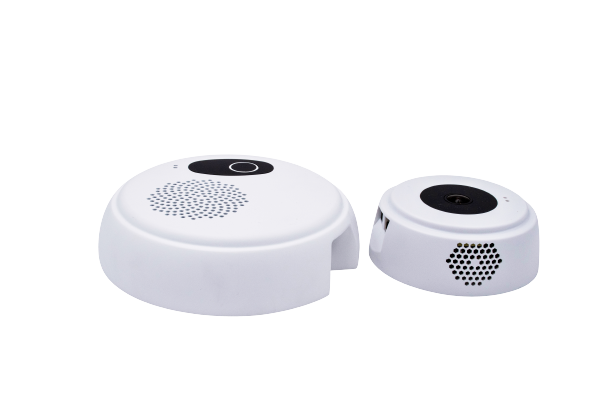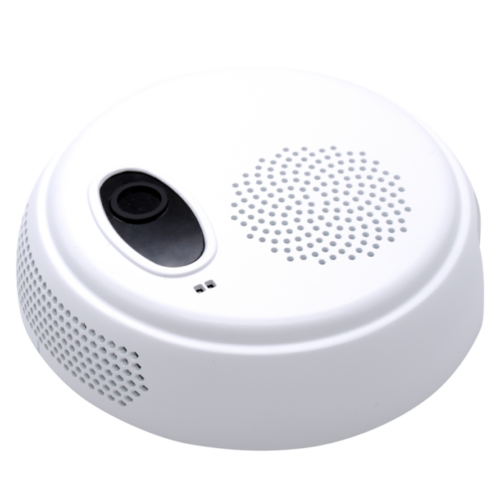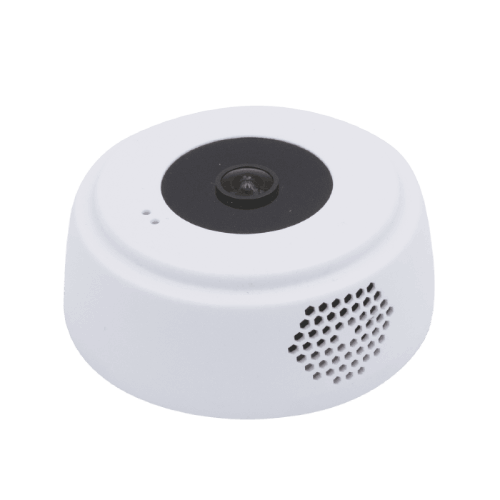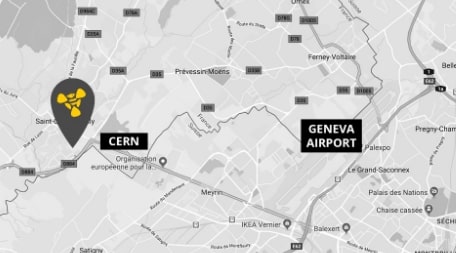Types of people traffic counters: Characteristics and applications
A wide range of different people counting technologies have been developed, each with its own strengths and weaknesses. Here is our guide to the different types of people traffic counters to help you choose which people counting technology is right for you.
Break beam sensor
Break beam sensors are one of the earliest and simplest people traffic counters, consisting of an infrared emitter and detector which are positioned on either side of a doorway. The emitter shines a continuous beam of infrared light at the receiver, and the system detects a person when they walk by and subsequently “break” the beam.
Cheap and easy to install, break beam sensors remain popular. However, they face several limitations. Break beam sensors are unidirectional – meaning they can’t distinguish between traffic passing into or out of a doorway – so they can only provide room occupancy information in one-way systems. In addition, they are notably inaccurate: for example, two people walking side-by-side will register as one person.

RFID
RFID (radiofrequency identification) people traffic counters use a “reader” to detect “tags” which are worn by personnel. RFID systems are inexpensive and do not require line-of-sight to function. However, the requirement for people to wear ID tags typically limits RFID people traffic counters to closed systems such as labs or warehouses. As implied by the name, RFID systems are not anonymous. Because they ID individual people, this introduces additional data handling and GDPR issues for businesses. (1)
WiFi/Beacon
WiFi and beacon people traffic counters operate on a similar principle to RFID – but rather than detect RFID tags, they use WiFi or Bluetooth to detect smartphones (or other WiFi/Bluetooth enabled devices). This broadens their range of potential applications by eliminating the need for RFID tags. However, this comes at the cost of accuracy: people who do not carry a smartphone (or simply have Bluetooth turned off) will not be counted, and people carrying a tablet or wearing a smartwatch may be counted several times. These technologies also suffer from the same lack of anonymity as RFID people traffic counters. (2)
Camera sensor
Camera technology is a robust method of people counting hardware installation is simple, and modern image-processing algorithms are capable of very accurate counting. Cameras are, however, relatively expensive compared to other people traffic counters; and the complexity of image processing in different conditions means that device configuration can be fairly complex. Cameras also unavoidably capture identifying personal information, bringing privacy and data handling concerns.

Thermal sensor
Thermal sensors work on a similar basis to regular cameras, except they are sensitive to infrared light rather than visible light. This means they can detect temperature and count people by detecting their body heat profile without detecting any identifying information. Despite the advantage of anonymity, thermal people traffic counters are expensive, and typically complex to install and configure.

Tredecile Time-of-Flight
Tredecile people traffic counters use infrared Time-of-Flight technology to gather 3D images of their surroundings. This information enables onboard algorithms to count people with very high accuracy (95% or more). Moreover, the low spatial resolution of our sensors ensures that no identifying personal information can be captured, so Tredecile people traffic counters are anonymous and GDPR-compliant by design.
The Tredecile People Counter L-XL is optimized for use in large doorways and corridors. Similar in size to a household smoke alarm, the low-cost device can be quickly installed above large doorways and easily configured via any web-enabled smartphone or computer. The Tredecile People Counting M is designed for narrow doorways and corridors, counting one person at a time. Infrared technology ensures that Tredecile people traffic counters work well in virtually any environment – including low-light conditions – and a simple (optional) IoT platform enables seamless, hassle-free data integration.
Interested in a secure, reliable, and low-cost people counting solution for your business? Get in touch with the Tredecile team today to find out more about our people traffic counters.
References and further reading
- Han, H. et al. Counting RFID Tags Efficiently and Anonymously. in 1–9 (2010). doi:10.1109/INFCOM.2010.5461944.
- Yang, Y., Cao, J., Liu, X. & Liu, X. Wi-Count: Passing People Counting with COTS WiFi Devices. in 2018 27th International Conference on Computer Communication and Networks (ICCCN) 1–9 (2018). doi:10.1109/ICCCN.2018.8487420.


















